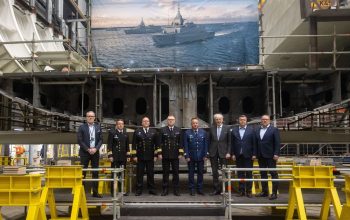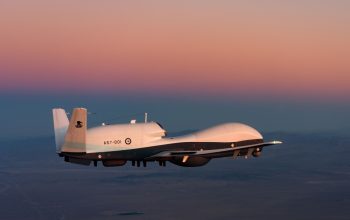The Royal Australian Navy will join key regional partners India, Japan and the United States for Exercise MALABAR 2021. Anzac class frigate HMAS Warramunga will join ships and aircraft from participating nations for the high-end military exercise off the coast of Guam in the Indo-Pacific. Warramunga is a long-range frigate capable of air defence, surface and undersea warfare, surveillance, reconnaissance and interdiction. This year’s Exercise MALABAR will see the four nations’ forces conduct a range of maritime operations involving live firings and anti-submarine warfare operations. This is the second consecutive year that Australia has been invited to participate in Exercise MALABAR.
Chief of Navy, Vice Admiral Michael Noonan said, “Australia’s participation in the multilateral Exercise MALABAR 2021 would strengthen our collective ability to contribute to regional security. Australia is committed to working closely with our partners to address shared regional challenges, including in the maritime domain. Our forces’ participation in Exercise MALABAR 2021 will enhance the region’s maritime interoperability and is a key cooperative activity between us. We regularly work with India, Japan and the United States to build our professional relationships and strengthen the foundations for an open, inclusive and resilient Indo-Pacific.”

Exercise Malabar is a trilateral naval exercise involving the United States, Japan and India as permanent partners. The annual Malabar exercises includes diverse activities, ranging from fighter combat operations from aircraft carriers through maritime interdiction operations, anti-submarine warfare, diving salvage operations, amphibious operations, counter-piracy operations, cross–deck helicopter landings and anti–air warfare operations. Originally begun in 1992 as a bilateral exercise between India and the United States, the exercise was expanded in 2007 with the participation of Japan, Singapore and Australia.
A joint exercise involving the naval forces of India, the United States, Japan and Australia will be held this year again. In June 2020, China had issued a ‘demarche’ to India, United States, Japan and Australia seeking details about their four-nation meeting, termed a Quadrilateral Initiative. The planned Malabar exercise will be held in the western Pacific and is aimed at keeping China in check amid the Asian power’s increasing assertiveness in regional waters. Last year’s drills by the four major Indo-Pacific democracies known as the “Quad” were held in the Bay of Bengal and the Arabian Sea.


























